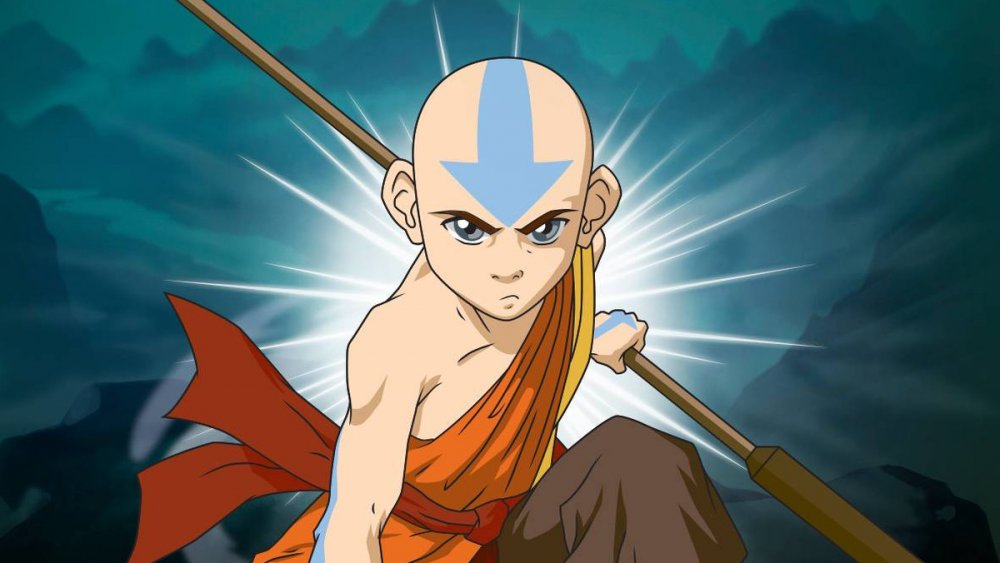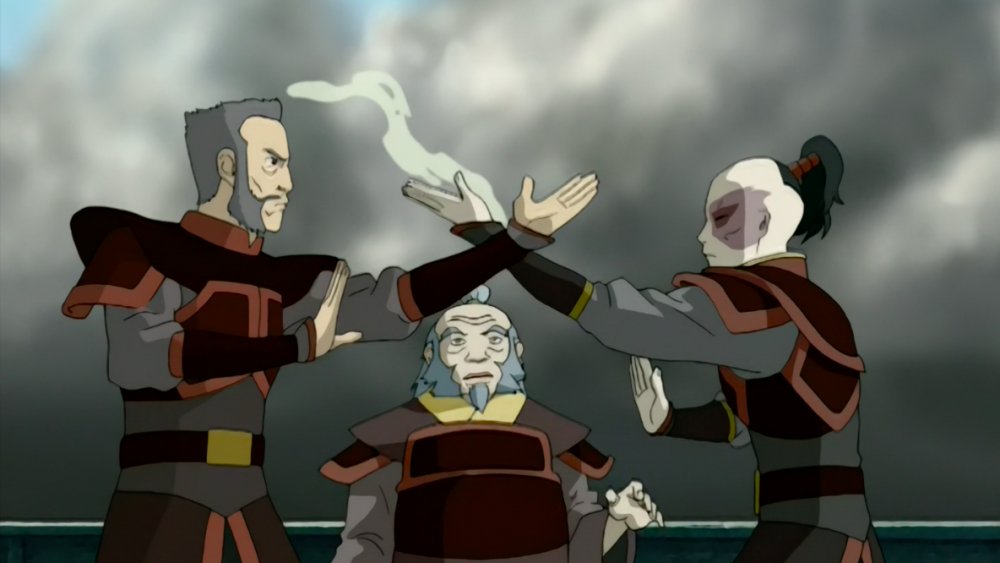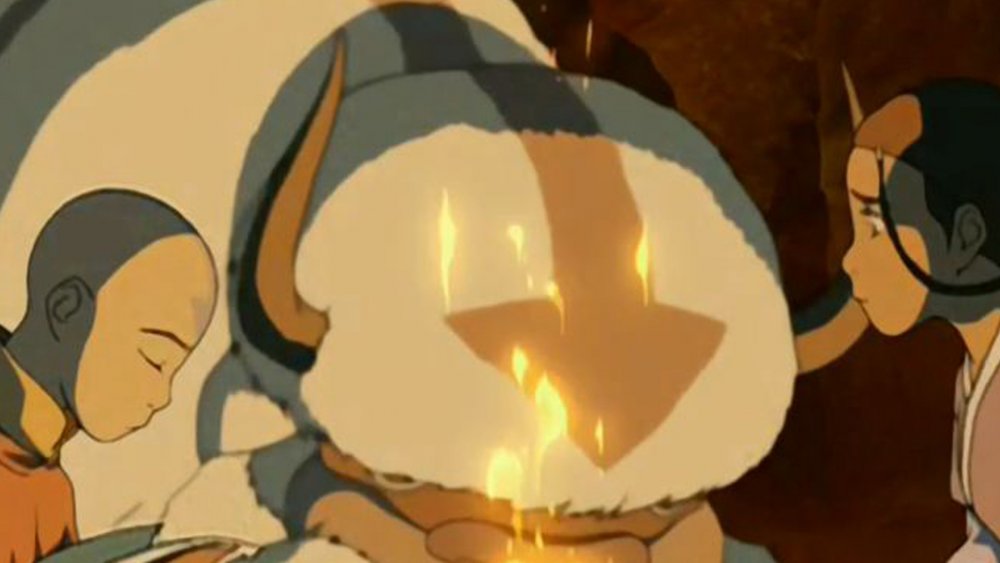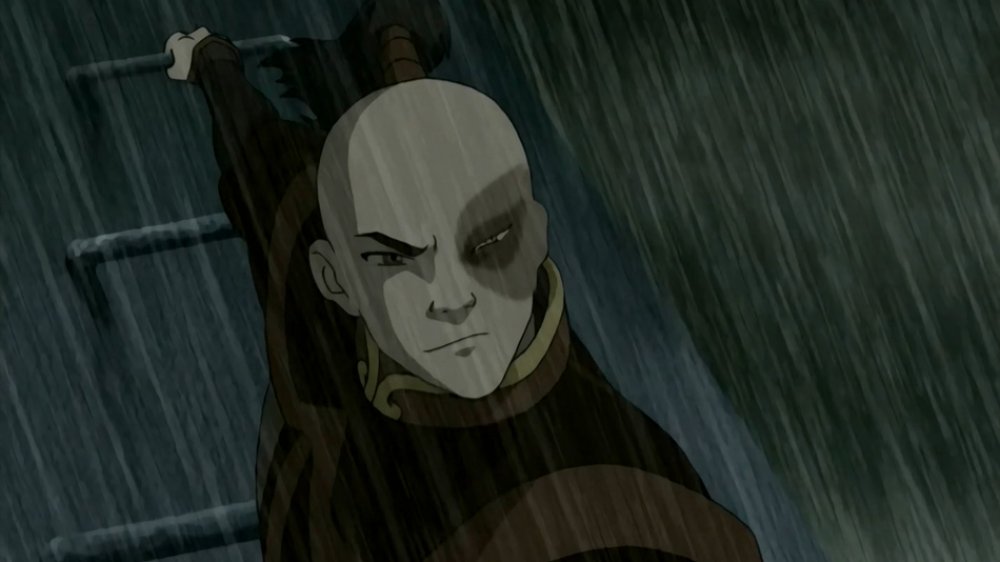The Episode Of Avatar: The Last Airbender That Changed Everything
Avatar: The Last Airbender is having a bit of a cultural moment right now. The 15-year-old series has seen an expected spike in reappraisals, rewatches, and celebrations since it returned to American streaming services. But to act like the love of the show is anything new would be false.
With Avatar, Nickelodeon created one of the most fully-realized animated worlds that children's cartoons had ever seen, filling it with deep and complex characters who played off each other against the backdrop of a global (and seemingly unending) war. The incredible achievement was recognized at the time, and legions of fans have kept the chatter going for years since it wrapped up its focused three-season arc. Of course, this level of adoration wasn't exactly a foregone conclusion.
In fact, through most of the first season, it seemed that Avatar would be just another well-executed and interesting cartoon. One episode changed all of that: "The Storm."
"The Storm" gives us a look at Zuko's backstory
Like most of the other episodes you'll find at the top of Avatar episode rankings, "The Storm" is a character study. As with the similarly lauded and later "Tale of Iroh," it dives into the backstory and motivations of characters whose driving forces and place in the world previously seemed set. What sets it apart — and makes it so obvious that the team behind Avatar had something bigger in mind — is its dual structure. Over the course of this one episode, viewers are treated to the backstories of protagonist Aang and antagonist Zuko in a way that reveals they aren't as different as they might think.
Prince Zuko's tragic backstory comes around after he brushes off one of his subordinates, cruelly noting that he doesn't care whether the men under him live or die. To quell the angry crew, Zuko's uncle Iroh lays out the story of how Zuko came to be on the mission to capture the Avatar in the first place. Before the series' story began, young Zuko spoke out of turn in a meeting between Fire Nation generals with his father, the Fire Lord. He objected to the casual manner in which the generals were willing to send men to die, ultimately leading to a challenge from Zuko's father. He fought the Fire Lord and was left with a disfiguring scar on his face, before being tasked with capturing the Avatar to restore his own honor.
In short, Zuko has been taught that the way to be a leader is to single-mindedly chase goals, without regard to who might be hurt in the process. The cracks in this cruel armor show through throughout the episode, with the audience understanding that the younger Zuko who objected in the meeting is still at the core of who he is.
We also learn more about Aang in "The Storm"
Aang's origin is also explored in "The Storm." The titular Last Airbender was told from a very young age that the fate of the world would one day be in his hands, and we see the way that this weighs on him in both flashbacks and his interactions in the present. When a citizen of the Earth Kingdom criticizes Aang for his century-long disappearance, Aang flees into a dangerous storm. In Aang's recollection, we see the events that led to him being trapped in the ice for one hundred years as the Fire Nation waged war on the world.
The weight of bringing the world together and the responsibilities of being the Avatar caused Aang — by all accounts, a lazy kid with a casual attitude toward duty — to flee his temple. His initial shirking of responsibility set the world on the catastrophic course to the events of the series.
While the show ends with both characters resolute in their duties, it casts the events of the show before and after in a different light. Deep down, neither character wants to fulfill the destiny that their elders have laid out for them. And while they continue to go through the motions of their assigned roles, viewers go forward with the knowledge that they're both skeptical of what they've been told they must do.
That knowledge hangs over the rest of the series, adding unspoken motivations to just about every other turn of the plot. It's the first flash of how complicated this kids' show could become — and, arguably, the most important one.
Fans and critics alike love Avatar: The Last Airbender's "The Storm"
Clearly, there are a lot of reasons to find Avatar: The Last Airbender's "The Storm" significant within the series' canon. Not only that, but the episode is also highly enjoyable — and both fans and critics alike agree that "The Storm" is a wholly satisfying watch.
Writing for IGN, Tory Ireland Mell said of the episode, "After a couple of weeks of less than perfect episodes, Avatar bounces back with heart, meaning, and some much anticipated explanations."
The A.V. Club's Hayden Childs wrote in his retrospective review of "The Storm" and the episode that preceded it, "I love the parallels between Zuko and Aang. I love that the show is telling children that sometimes life will thrust important moments upon you so quickly that you have no time to prepare or try to understand, and that the best one can do is to learn to live with the changes. I love the unspoken tragedy of Monk Gyatso, a story of great depth that happens mostly in the margins of Aang's memories." Childs added that the episode "doles out the exposition" exceptionally well, and expertly "pauses to capture a fantastically ambiguous look between Aang and Zuko" that sets up the atmsophere of the following episode.
Avatar fans feel much the same. On IMDb, over 2,300 users have submitted ratings for "The Storm," which currently sits at a 9.1 out of 10 score on the site — making it the 17th best rated episode of the 66-episode show.



